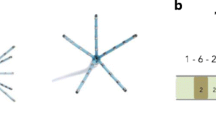Abstract
Introduction
Complex atrial tachyarrhythmias (CATs) are commonly observed in patients with prior catheter ablation or cardiac surgery. These arrhythmias are challenging to map and ablate. Historically, entrainment mapping was utilized to characterize CAT. With the advent of high-definition mapping (HDM), full visualization of the CAT circuit is possible which may obviate the need for entrainment mapping.
Methods
We sought to investigate the outcomes of catheter ablation of CAT guided only by HDM. Consecutive patients who underwent CAT ablation from 2017 to 2021 were included in our study (excluding right atrial tachyarrhythmias). Patients were sorted by the type of mapping performed. Group I consisted of patients where HDM alone was utilized with no attempt of entrainment. Group II consisted of patients where both entrainment and HDM were utilized.
Results
A total of 67 patients were included in our study, with 40 patients in HDM group (I) and 27 patients in entrainment group (II). No statistically significant difference regarding 1-year freedom from atrial arrhythmias was found between the two groups (80% vs 77.8%, p = 0.819). Four CATs were terminated by entrainment during procedure versus none in the HDM-only group (p = 0.011).
Conclusions
CAT ablation with HDM alone yielded similar 1-year freedom from atrial arrhythmias compared to ablation with HDM and entrainment. Entrainment combined with HDM was associated with higher undesired CAT interruption rate. Further validation is needed with randomized control trials.


Similar content being viewed by others
References
Cooper JM. How to view entrainment when mapping complex atrial tachycardias. JACC Clin Electrophysiol. 2020;6:533–6.
Patel AM, d’Avila A, Neuzil P, et al. Atrial tachycardia after ablation of persistent atrial fibrillation: identification of the critical isthmus with a combination of multielectrode activation mapping and targeted entrainment mapping. Circ Arrhythm Electrophysiol. 2008;1:14–22.
Bun SS, Latcu DG, Delassi T, Jamili ME, Amoura AA, Saoudi N. Ultra-high-definition mapping of atrial arrhythmias. Circ J. 2016;80:579–86.
Pathik B, Lee G, Nalliah C, et al. Entrainment and high-density three-dimensional mapping in right atrial macroreentry provide critical complementary information: entrainment may unmask “visual reentry” as passive. Heart Rhythm. 2017;14:1541–9.
Schaeffer B, Stevenson WG. Entrainment mapping: theoretical considerations and practical implementation. J Cardiovasc Electrophysiol. 2018;29:204–13.
Usui A, Inden Y, Mizutani S, Takagi Y, Akita T, Ueda Y. Repetitive atrial flutter as a complication of the left-sided simple maze procedure. Ann Thorac Surg. 2002;73:1457–9.
Oral H, Knight BP, Morady F. Left atrial flutter after segmental ostial radiofrequency catheter ablation for pulmonary vein isolation. Pacing Clin Electrophysiol. 2003;26:1417–9.
Chugh A, Oral H, Lemola K, et al. Prevalence, mechanisms, and clinical significance of macroreentrant atrial tachycardia during and following left atrial ablation for atrial fibrillation. Heart Rhythm. 2005;2:464–71.
Rostock T, Drewitz I, Steven D, et al. Characterization, mapping, and catheter ablation of recurrent atrial tachycardias after stepwise ablation of long-lasting persistent atrial fibrillation. Circ Arrhythm Electrophysiol. 2010;3:160–9.
Mesas CE, Pappone C, Lang CC, et al. Left atrial tachycardia after circumferential pulmonary vein ablation for atrial fibrillation: electroanatomic characterization and treatment. J Am Coll Cardiol. 2004;44:1071–9.
Zhang XD, Gu J, Jiang WF, et al. Optimal rhythm-control strategy for recurrent atrial tachycardia after catheter ablation of persistent atrial fibrillation: a randomized clinical trial. Eur Heart J. 2014;35:1327–34.
Schaeffer B, Akbulak RO, Jularic M, et al. High-density mapping and ablation of primary nonfocal left atrial tachycardia: characterizing a distinct arrhythmogenic substrate. JACC Clin Electrophysiol. 2019;5:417–26.
Massoullie G, Moubarak G, Thomas O, et al. Initial multicenter experience with a new highdensity coloring module: impact for complex atrial arrhythmias interpretation. J Interv Card Electrophysiol. 2021;60:313–9.
Waldo AL, MacLean WA, Karp RB, Kouchoukos NT, James TN. Entrainment and interruption of atrial flutter with atrial pacing: studies in man following open heart surgery. Circulation. 1977;56:737–45.
Esato M, Hindricks G, Sommer P, et al. Color-coded three-dimensional entrainment mapping for analysis and treatment of atrial macroreentrant tachycardia. Heart Rhythm. 2009;6(3):349–58.
Triedman JK, Alexander ME, Berul CI, Bevilacqua LM, Walsh EP. Electroanatomic mapping of entrained and exit zones in patients with repaired congenital heart disease and intra-atrial reentrant tachycardia. Circulation. 2001;103(16):2060–5.
Winkle RA, Moskovitz R, Mead RH, et al. Ablation of atypical atrial flutters using ultra high density-activation sequence mapping. J Interv Card Electrophysiol. 2017;48:177–84.
Luther V, Sikkel M, Bennett N, et al. Visualizing localized reentry with ultra-high density mapping in iatrogenic atrial tachycardia: beware pseudo-reentry. Circ Arrhythm Electrophysiol. 2017;10(4):e004724.
Derval N, Takigawa M, Frontera A, et al. Characterization of complex atrial tachycardia in patients with previous atrial interventions using high-resolution mapping. JACC Clin Electrophysiol. 2020;6:815–26.
Author information
Authors and Affiliations
Corresponding author
Ethics declarations
Ethical approval
Yes.
Informed consent
Optional.
Conflict of interest
Dr. Di Biase is a consultant for Stereotaxis, Biosense Webster, Boston Scientific, and Abbott Medical and has received speaker honoraria/travel from Medtronic, Atricure, Biotronik, Baylis Medical, and Zoll. Dr. Pasquale Santangeli is a consultant for Biosense Webster, Abbott, Baylis Medical, InHeart, and Farapulse. Dr. Natale is a consultant for Biosense Webster, Stereotaxis, and Abbott and has received speaker honoraria/travel from Medtronic, Atricure, Biotronik, and Janssen. The remaining authors report no conflict of interest.
Additional information
Publisher's note
Springer Nature remains neutral with regard to jurisdictional claims in published maps and institutional affiliations.
What is new?
• This is the first study comparing HDM alone and combined entrainment mapping in patients undergoing CAT ablation.
• CAT ablation with HDM alone yielded similar 1-year freedom from atrial arrhythmias compared to ablation with both HDM and entrainment.
• Entrainment combined with HDM was associated with higher undesired CAT interruption rate.
Rights and permissions
Springer Nature or its licensor (e.g. a society or other partner) holds exclusive rights to this article under a publishing agreement with the author(s) or other rightsholder(s); author self-archiving of the accepted manuscript version of this article is solely governed by the terms of such publishing agreement and applicable law.
About this article
Cite this article
Zhang, X., Li, W., Lin, A. et al. Outcomes of catheter ablation of atrial tachyarrhythmia guided exclusively by activation mapping. J Interv Card Electrophysiol 66, 1383–1389 (2023). https://doi.org/10.1007/s10840-022-01435-2
Received:
Accepted:
Published:
Issue Date:
DOI: https://doi.org/10.1007/s10840-022-01435-2




